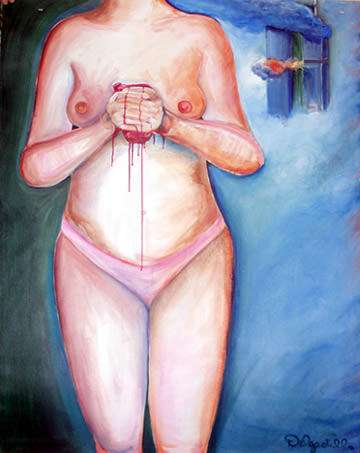Artifact: Public Offense

What kind of art belongs in public? In January, one cultural official in Los Angeles decided that "We need art that does not offend anyone." It was an unusually plainspoken, if rather plaintive, moment in the endless debate over public culture. What inspired it was a 150-foot-long tapestry that had just been unveiled at L.A.'s airport; the work's most controversial detail is at right. After numerous complaints, city officials ordered the work removed; after cries of censorship, the same officials rescinded their order.
Some unhappy observers compared the tapestry's nude to the Super Bowl's Janet Jackson moment. In fact, the image is a reaction by painter Victoria Delgadillo (one of the work's 115 creators) to 9/11, perhaps an even more unsettling concept to find in an airport. The tapestry's overall intention -- to act as a bridge between the area's black and Latino communities -- was lost in the shouting.
Public culture long ago became synonymous with public acrimony. The direct negotiation over meaning and value that occurs between patron and artist, or buyer and seller, never happens when art is displayed by a patron state as an act of general cultural "uplift." Instead, the cultural becomes political, and the less meaning a work has -- "art that does not offend anyone" -- the better for the state.




Show Comments (1)